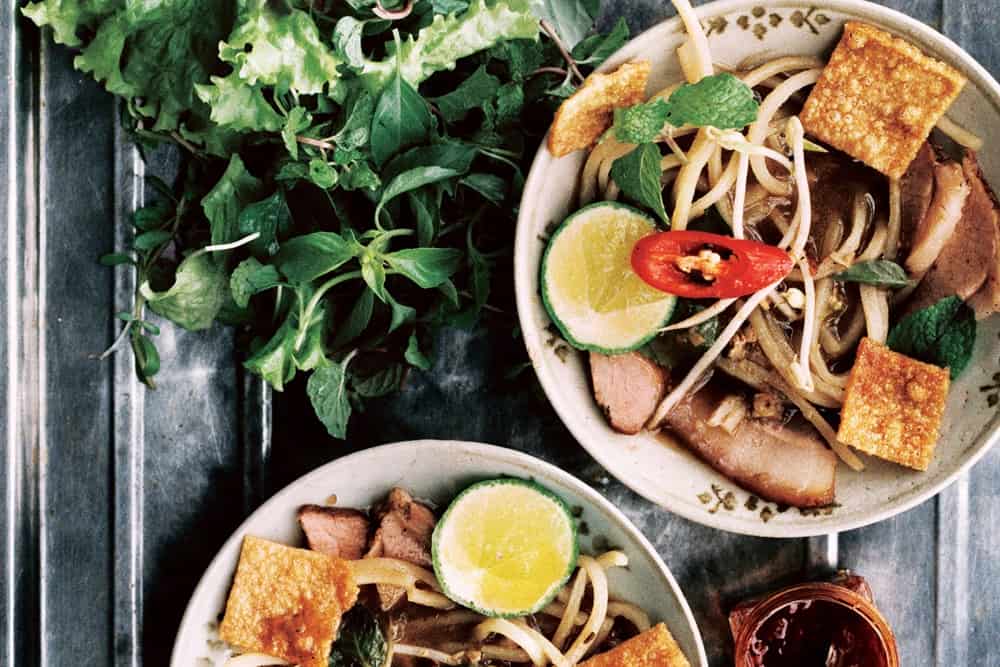A NOODLE DISH LIKE NO OTHER
It is said that Hoi An cuisine includes one dish that cannot be authentically replicated outside the town thanks to its legendary water.
Steeped in folklore and embodying the essence of Hoi An, Cau Lau is featured on the Red Bean menu. This rustic downto-earth noodle dish carries a unique flavor and texture. The preparation of the noodles follows a very precise and seemingly complex process. And, unlike other dishes, which can be regionally adapted, the Cao Lau’s recipe should not be changed.
 Cao lau noodles are one reason this dish stands out from all other noodle dishes. They are firmer and chewier, more reminiscent of Japanese udon noodles (although these are wheat based). Cao lau noodle strips must be made from the pure rice of Quang Nam province, then soaked in water mixed with lye ash from trees originally grown on Cu Lao Cham. This provides the chewy consistency and distinctive flavor and after soaking, the rice takes on a light yellow color.
Cao lau noodles are one reason this dish stands out from all other noodle dishes. They are firmer and chewier, more reminiscent of Japanese udon noodles (although these are wheat based). Cao lau noodle strips must be made from the pure rice of Quang Nam province, then soaked in water mixed with lye ash from trees originally grown on Cu Lao Cham. This provides the chewy consistency and distinctive flavor and after soaking, the rice takes on a light yellow color.
It is also said that the water, which is mixed with wood ash (that makes lye) must come from the Ba Le Well. Hoi An has around 80 ancient wells but the square-mouthed Ba Le Well is the most legendary, and associated with many mystical stories.
In addition to noodles and the intensely flavored salty broth, the other compulsory ingredients are slices of lean char siu pork seasoned in a five spice marinade, crispy pigskin, raw vegetables, bean sprouts and up to 12 kinds of herbs (the three essential are basil, crown daisy and pigweed) from Tra Que Herb village. The hearty noodle dish is topped with rice crackers, peanuts, and scallions and it is often served with lime and Hoi An’s signature fiery chili paste.
Finally, the name for this dish – Cao Lau – also carries significance. Cao means high and lau means chamber and the literal translation of this dish is ‘high floor’ or ‘high chamber’. At one time the dish was served from the 2nd floor/higher levels of restaurants and in the past only the rich could access these higher levels. Also it is said that the combined words may have referred to the local businessmen and traders from the 17-18th centuries who would sit in high chambers eating this noodle dish while keeping watch on their shops and businesses below.



Leave A Reply